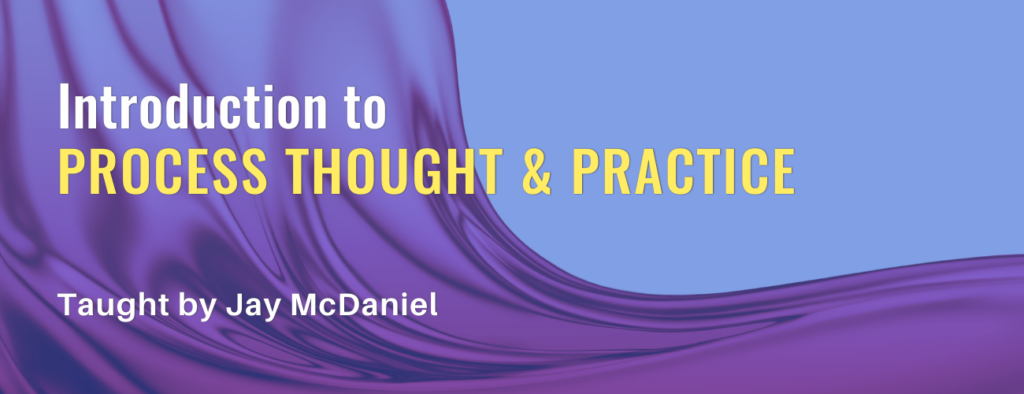Introduction to Process Thought & Practice

Live Session Info
Dates: September 3, 2022 – September 24, 2022
Times: Saturdays, 9:00 AM – 10:30 AM Pacific
Course Summary
The process tradition can be imagined as a vibrant and growing tree. The roots consist of the key ideas in Whitehead’s philosophy; the trunk consists of general ideas that flow from his philosophy and that can be understood by people from many walks of life; and the branches consist of applications of these ideas in personal life and community development, as guided by four ideals that are shared by process thinkers: whole persons, whole communities, a whole planet, and holistic thinking. This course covers all three areas: roots, trunk, and branches. Its aim is to provide an overview that can be a springboard for study and action.
Course Description
Process thinkers belong to many different cultures and live in many different regions of the world: Africa, Asia, Latin America, Europe, North America, and Oceania. They include artists, philosophers, farmers, homemakers, parents and grandparents; people from different religions; and people without any religious affiliation.
Most of the scholars in the movement are influenced by the perspective of the late philosopher and mathematician, Alfred North Whitehead. His thinking embodies the leading edge of the intellectual side of process thinking and is a catalyst for further thinking.
The tradition of process thinking can be compared to a growing and vibrant tree, with blossoms yet to unfold. The roots of the tree are the many ideas developed by Whitehead in his mature philosophy. They were articulated most systematically in his book Process and Reality: An Essay in Cosmology. The trunk consists of more general ideas which have been developed by subsequent thinkers from different cultures, adding creativity of their own. These general ideas flow from Whitehead’s philosophy but are less technical in tone. The branches consist of the many ways in which these ideas are being applied to daily life and community development. The branches include applications to a wide array of topics, ranging from art and music to education and ecology.
In our introduction we will cover all three areas: the roots, the trunk, and the branches, giving you a sense of the whole. We cover the roots through a Whitehead Video series created by Jay McDaniel, found in his website Open Horizons, and through C. Robert Mesle’s Introduction of Process-Relational Philosophy. If participants wish, they can also turn to Whitehead’s Process and Reality itself. Jay’s video series walks viewers through numerous key paragraphs.
We cover the trunk through Jay McDaniel’s What is Process Thought? with particular focus on its twenty key ideas and its identification of the “fallacies” process thinkers seek to avoid. Also helpful here are some slideshows offered by the Cobb Institute: A Process Worldview: Springboards for Thought by Jay McDaniel and Process Worldview: Reflections by Lynn De Jonghe, Beauty and Process Theology by Patricia Adams Farmer, and Six Approaches to God by Jay McDaniel. Each of these is a short read: five minutes at most.
We cover the branches through additional slideshows offered by the Cobb Institute: The Four Hopes, Process and Interfaith, Process and Spirituality, Fourteen Transformations, and Ecological Civilizations.
There is a lot of reading in the course, and not all can be covered in the class sessions. Learning best occurs in three ways: (1) readings of texts on your own; (2) discussing ideas in the online forum; (3) participating in four weekly sessions, each lasting an hour and a half.
You might also try to apply the ideas learned in local settings through volunteer work, art projects, or teaching, sharing them with the class. In process thought, ideas are felt and not just understood. Art and music contribute to the feeling. We learn from experience.

